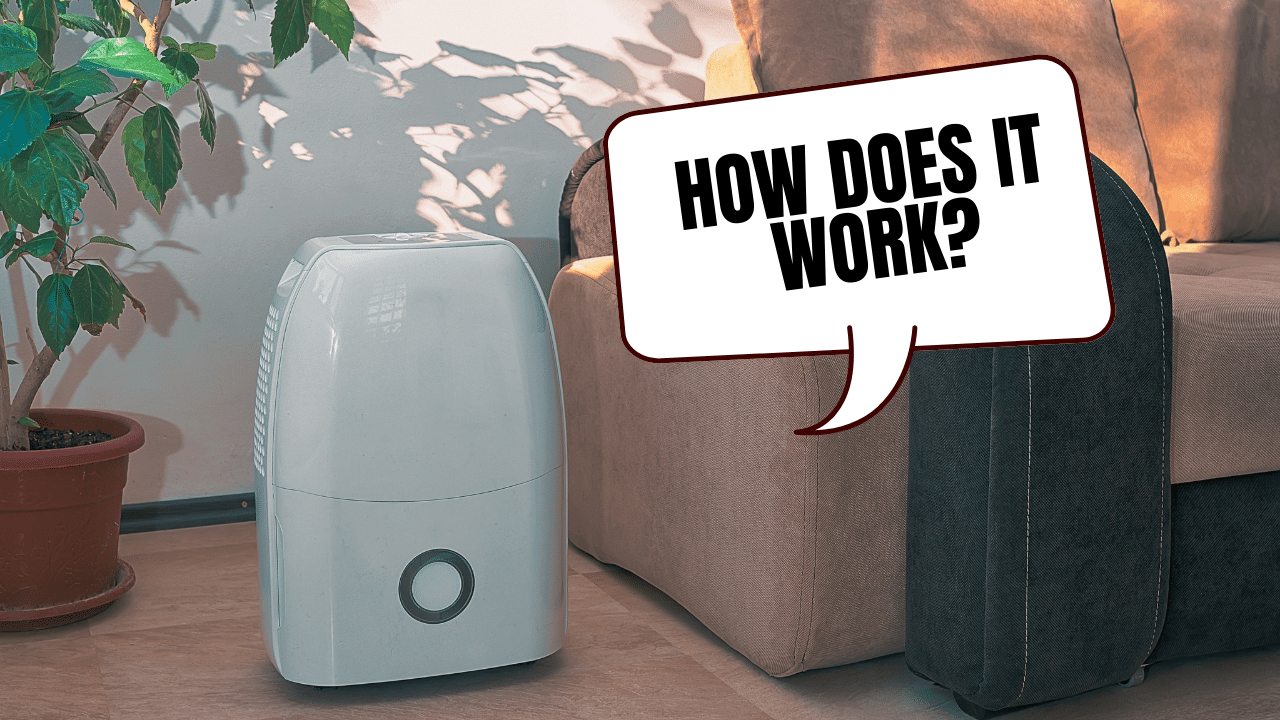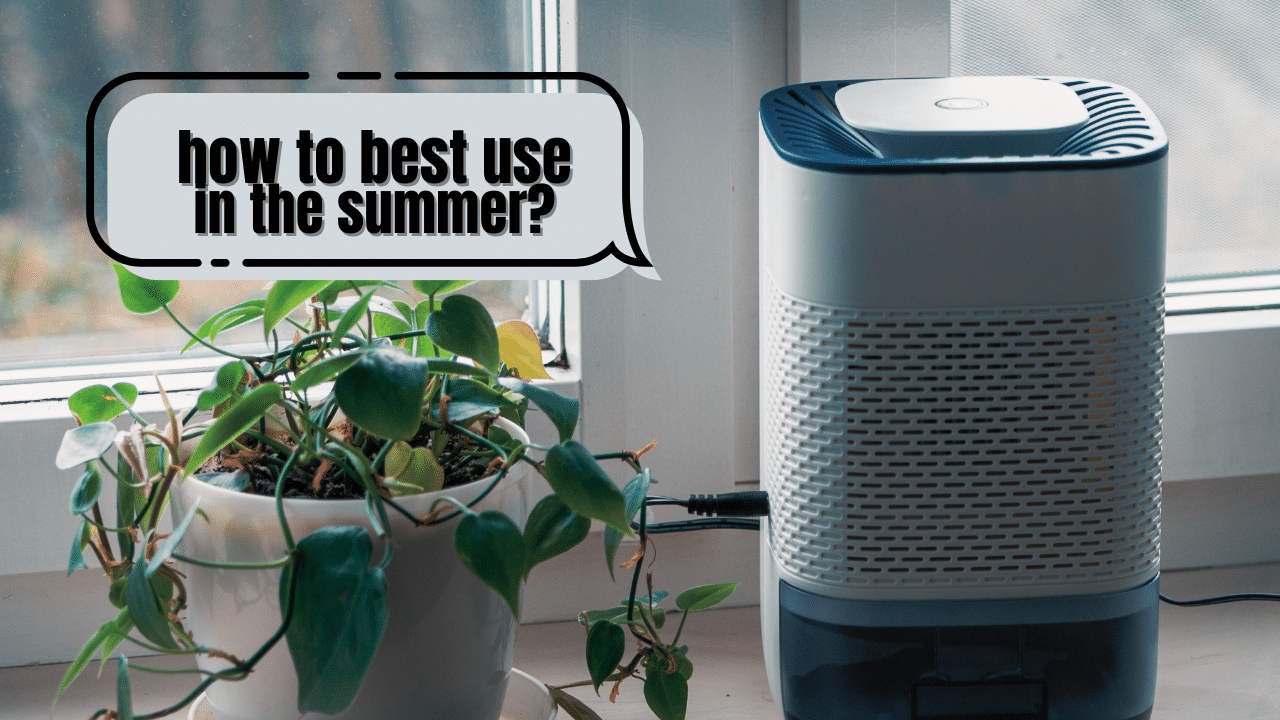When you think of summer, you think of beaches, fun, and frolicking. But the glitz and glamour of summer always comes with the less talked about (yet very annoying) feeling of stickiness and sweating from the often-unbearable high heat levels during this time of year. Because of the increased humidity levels found during this season, the summer months may make sections of your home or office seem stuffy, unpleasant, and even claustrophobic.
But this article brings good news! You don't have to suffer the massive heat and humidity wave throughout the summer by using your dehumidifier properly. In this article, you'll learn the tips and tricks to how you can make the most out of your dehumidifier during the hot season. Hopefully, you'll be walking out optimistic for the summer after you've read this article.

What is a Dehumidifier and How Does It Work?
Simply put, dehumidifiers operate to regulate the amount of moisture that is detected in the air. They draw moisture from warmer air into cooling components, creating condensation, which draws the water out of the air and spits the drier air back out.
If you're curious as to how that happens, you should only be aware of four basic components. The fan, compressor cooling coils, reservoir (bucket), and reheater are the essential parts of this contraption that you need to be aware of. In the process, the fan first draws air into the dehumidifier from a surrounding region. Then, when the air is confined, it travels over the cooling coils, which remove moisture from the air and cause condensation. Condensation, which is simply water droplets, is gathered in the reservoir, which resembles a bucket. The air is then reheated by the reheater and returned to the room. When the bucket is full of water and must be emptied, most dehumidifiers sound an alert.
On the other hand, some dehumidifiers feature direct ports for connecting a hose to discharge the water collected into a drain. (Related: The Ideal Indoor Humidity To Keep You Comfortable At Home)
Benefits of Having a Dehumidifier in the Summer
During the summer, you want to enjoy the vacations that you're supposed to take, so you should take all the extra measures that you can do to ensure that your home environment is comfortable. In this part of the blog, we present the four ways in which a dehumidifier helps with the uncomfortable environment during the summer:

Best Dehumidifier Settings and Practices for the Summer
While the benefits of having a dehumidifier may now be apparent, all of these benefits will become moot if you don't understand how to set your dehumidifier according to your environmental needs. In the summer, while our main goal would be to beat the heat (while conserving energy), we might be tempted to crank up the dehumidifier to make the air cooler but removing too much moisture from the air can cause its own set of issues. Dry air irritates the nose and throat, which is especially bothersome for those prone to hay fever or even for the healthiest of people in prolonged circumstances.
Hence, it's critical to know what settings or practices you must abide by to get the most out of your dehumidifier in the summer season, and the following are just vital tips:
1. Start by Cleaning out the Grill
Keep things fresh. The filter cleans the air that goes through the dehumidifier, and when it's unclean, the effectiveness of your dehumidifier suffers. Many of the models in our rankings feature a light that indicates when it's time to clean the filter. It should be washed and dried on a regular basis, as directed in your owner's handbook. While you're at it, look over the instructions for cleaning the grill in the handbook.
If you were convinced by the benefits stated above, you're probably going to whip out the dehumidifier that you haven't used in a while to replace your 24/7 AC usage. However, air movement is hindered when the grill is unclean, so you need to clean it before you experience its cooling effect during the summer.
2. Position it in the Right Area
Choose the ideal location. Allow adequate space for air to move freely into and out of the dehumidifier. Generally, there are only two types of dehumidifiers, portable and whole-house dehumidifiers, each possessing its own advantages and disadvantages. Of course, if you have a whole-house one, then you wouldn't have to worry about this step because whole-house dehumidifiers are put near your HVAC unit, and, as the name implies, they function to dehumidify every room. But if you have portable units, though they are less costly, they must be positioned strategically because they usually just dehumidify small-room areas.
However, in any case, they should have plenty of room around the dehumidifier. Most dehumidifiers have a top-mounted air outlet and may be positioned against walls, while side-discharge units should be operated away from walls and furniture to allow for unobstructed air circulation.
3. Decide on a Humidity Level
Now, time to answer the question “What should I set my dehumidifier at?”. According to Energy Star, the ideal relative humidity level is between 30 and 50 percent (and 30 to 40 percent in colder areas during the heating season). In the instance that the humidity level rises over that, dust mites, mildew, and mold can thrive, triggering allergies that no homeowner wants for their family.
However, if you want to keep your energy cost under control during the hotter summer months (or if you reside in a humid environment), aim for the 50 percent level.
A dehumidified space at 78 degrees Fahrenheit might feel as pleasant as a humid one at 70 degrees Fahrenheit because a dehumidifier eliminates humidity from the airflow. As a result, a dehumidifier allows you to raise your thermostat temperature while still being comfortable and conserving energy.
4. Empty the Tank on a Regular Basis
An indicator flashes when the tank is full and the dehumidifier turns off. By emptying the tank on a regular basis during the hot season, you are able to keep the dehumidifier running when you're not at home. Alternatively, you may attach a hose to any of the tested dehumidifiers and direct the water to a nearby drain. A built-in pump in certain dehumidifiers pumps water horizontally or vertically through the hose and into a sink or even outside (through a basement window, for example).
5. All Windows and Doors should be Shut
During the summer, the naturally humid atmosphere is your worst enemy. So, obviously, using your dehumidifier while your doors and windows let in all that unpleasant humidity is counterproductive and makes it harder for your machine to work. As a solution, enclosing your area makes it easier for the dehumidifier to do its job.
How to Pick out a Dehumidifier
Conclusion
Having a dehumidifier is great for all of the reasons that were mentioned in this article. But it's always great to know that you can take better advantage of what your machine can offer when you know how to operate it according to your specific needs, especially during the summer.
Much like every machine in your house, dehumidifiers also need proper maintenance for them to function to their fullest capacity. When you've done everything, you can set it right, but it still somehow doesn't feel like it's doing the job, then don't hesitate to call a professional! At the end of the day, once you get your dehumidifier up and running, nothing will stop you from enjoying your home-cations for the rest of the summer!

